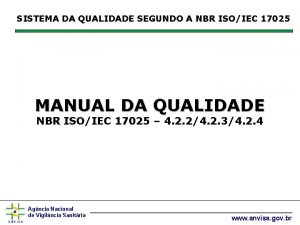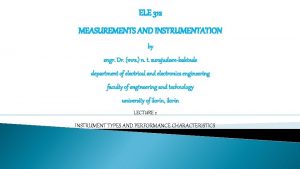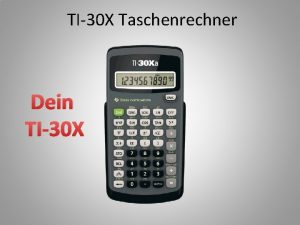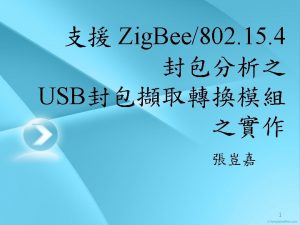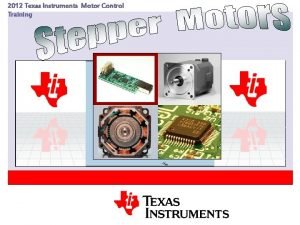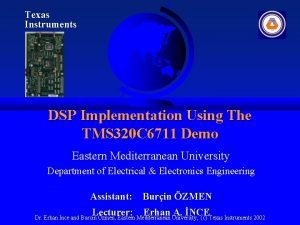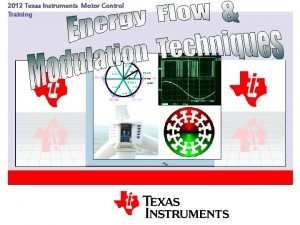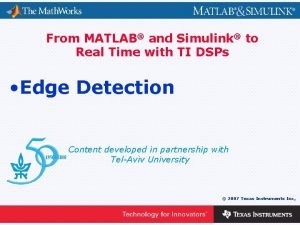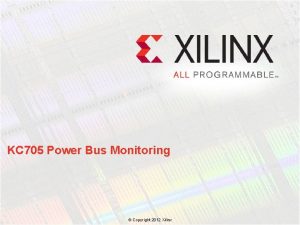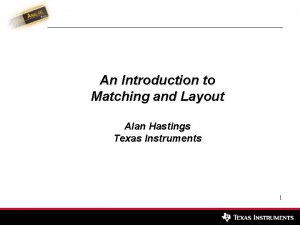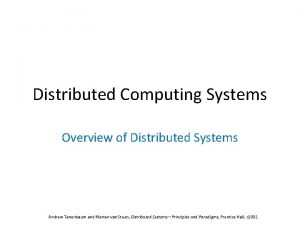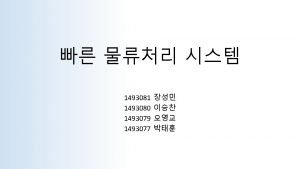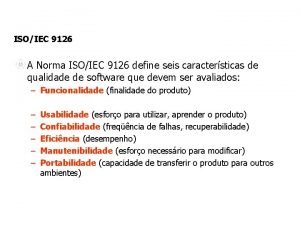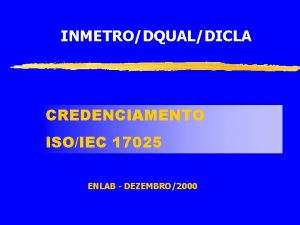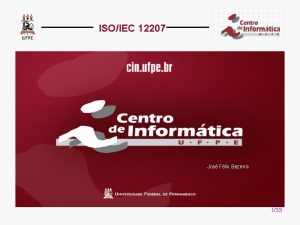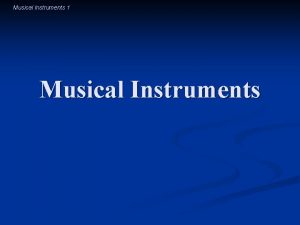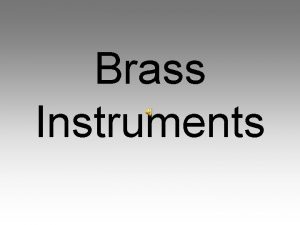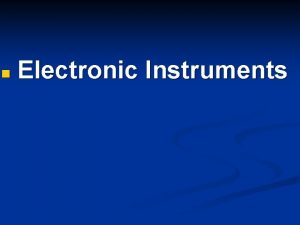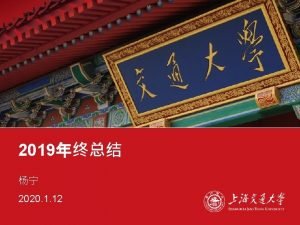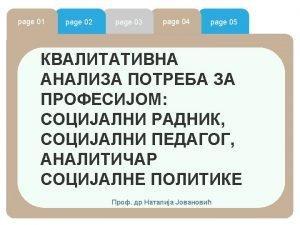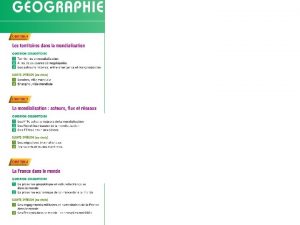ISOIEC 14443 Overview Copyright Texas Instruments Page 1
















- Slides: 16

ISO/IEC 14443 Overview Copyright Texas Instruments Page 1

ISO/IEC 14443 Overview ► Standards Overview Copyright Texas Instruments Page 2

ISO/IEC 14443 Overview ► – – – History The development of the standard was assigned to SC 17/WG 8 in 1994. A task force was established comprising several companies. The 1 st task was to determine what the market wanted in a contactless card. The task force studied various applications, that were in use at the time and projected for the foreseeable future. Compatibility with application layers of existing contact smart card (ISO/IEC 7816) standards was also taken into consideration for the ease of integration and deployment. – In the end, the task force defined four parts to the standard: 1. ISO/IEC 14443 -1 Physical characteristics 2. ISO/IEC 14443 -2 Radio Frequency Power and Signal Interface 3. ISO/IEC 14443 -3 Initialization and anticollision 4. ISO/IEC 14443 -4 Transmission Protocol Copyright Texas Instruments Page 3

ISO/IEC 14443 Overview ► History - Modes of Operation – The task force felt that a standard must also be capable of defining a card that uses a microprocessor as this offers the flexibility to easily update the application through software. – After a year of debate a consensus was reached by defining two ‘modes of operation’ in ISO/IEC 14443 -2 (the power and signal interface). These are referred to as ‘Type A’ and ‘Type B’. – In 1998 a third signal interface mode was proposed by Sony (Type C) but rejected as this did not add anything new to the standard. – All four parts of the ISO/IEC 14443 standards were completed by 2001. – In mid 2001, a number of companies proposed an amendment that would add five additional modes to ISO/IEC 14443 -2. (Type C > G). An SC 17 ballot (ISO/IEC JTC 1/SC 17 N 2051) on 11 th Jan 2001 eventually concluded to keep only the two modes A and B. Copyright Texas Instruments Page 4

ISO/IEC 14443 Overview ► History - Modes of Operation Copyright Texas Instruments Page 5

ISO/IEC 14443 Overview ► Acronyms There a vast amount of acronyms used in the standard. These are summarized in the ‘Symbols and Abbreviated Terms’ section at the front of all parts 1 > 4 of the standard. Primary acronyms are: PICC – Proximity Integrated Circuit Card (Transponder) PCD – Proximity Coupling Device (Reader) Also, many of the commands referenced in Parts 3 and 4 are formatted XXXA or XXXB. This identifies them as a Type A or Type B command. i. e. REQA - Request Type A PICC Command REQB - Request Type B PICC Command Copyright Texas Instruments Page 6

ISO/IEC 14443 Overview ► Standard Structure ISO/IEC 14443 -1 Physical Characteristics This part of the standard specifies the physical size of the smart card. The card is the following size: (85. 6 mm x 54. 0 mm x. 76 mm) referred to as ID-1 size. This is the size of a bank credit card. Copyright Texas Instruments Page 7

ISO/IEC 14443 Overview ► Standard Structure ISO/IEC 1443 -2 Power and Interface The ISO/IEC 14443 -2 standard has two modes with the following features: Reader to Card (PCD > PICC) Frequency Modulation Bit coding Data rate Card to Reader (PICC > PCD) Modulation Bit coding Subcarrier Bit coding Data rate Type A 13. 56 MHz 100% ASK Modified Miller 106 kb/s Type B 13. 56 MHz 10% ASK NRZ 106 kb/s Load OOK 847 k. Hz Manchester 106 kb/s Load BPSK 847 k. HZ NRZ 106 kb/s These features allow the reader to power and communicate with the card over a targeted range of operation of approximately 10 cm. Copyright Texas Instruments Page 8

ISO/IEC 14443 Overview ► Standard Structure ISO/IEC 1443 -2 Power and Interface Signal ALWAYS present Signal Disappears Completely Copyright Texas Instruments Page 9

ISO/IEC 14443 Overview ► Standard Structure ISO/IEC 14443 -3 Initialization and Anticollision – Part three of the standard enables the reader to identify the cards in the magnetic field and establish communications with a specific card. It specifies the byte format, frames and timing used during the 2 initial phases of communication. – The initialization process includes the commands between the reader and the card that activates the card to the ‘READY’ state. – This anticollision process follows to identify all PICC’s in the PCD field. Part 3 defines 2 anticollision processes for the 2 different modes: Type A > Bit-collision detection protocol Type B > Slotted ALOHA with dynamic slot adaptation. Copyright Texas Instruments Page 10

ISO/IEC 14443 Overview ► Standard Structure ISO/IEC 14443 -3 Initialization and Anticollision Initialization Idle State Type A request Ready State Wake-up Type A Answer to Request Type A Anticollision Ready State Answer to Select PICC Selection Active State Copyright Texas Instruments Halt Type A Note: Type A process illustrated Page 11

ISO/IEC 14443 Overview ► Standard Structure – – ISO/IEC 14443 -4 Transmission protocols Part four of the standard defines the half-duplex block transmission protocol. In particular, it defines the activation and deactivation sequences of the protocol. The activation sequence is concluded through the Protocol and Parameter Selection (PPS) process, upon which data can be exchanged. Upon completion of data exchange, the PICC can be disabled through the de-selection process. This standard has been developed with functionality and flexibility in mind. Copyright Texas Instruments Page 12

ISO/IEC 14443 Overview ► Standard Structure Protocol/Parameter Selection PICC selection ISO/IEC 14443 -4 Transmission protocols PICC Selection Active State De-selection Protocol / Parameter Selection Data Exchange Copyright Texas Instruments Note: Type A process illustrated Page 13

ISO/IEC 14443 Overview ► Complete Operation MIFARE is NOT the same as ‘Type A’. It is not compliant to ISO/IEC 14443 -4, Type A illustrated. It uses it’s own transmission protocol. Note: Type A process illustrated Copyright Texas Instruments Page 14

ISO/IEC 14443 Overview ► Communication Protocol Stack TI’s TRF 7960 ASIC supports both Type A AND Type B Reader Software can be configured to support remainder of the standard and the application. ISO/IEC 14443/B – 2 Air Interface & Modulation H/W ISO/IEC 14443/B – 3 Initialization & anti-collision ISO/IEC 14443/B – 4 Transmission port Layer S/W Application Protocol Layer Security Layer Copyright Texas Instruments Page 15

ISO/IEC 14443 Overview ► Mode Conclusion Type B is a more recent, advanced, flexible and efficient Mode of Operation. Copyright Texas Instruments Page 16
 Isoiec
Isoiec Texas recapture districts
Texas recapture districts Texas public school finance overview
Texas public school finance overview Indicating instruments and instruments with a signal output
Indicating instruments and instruments with a signal output Null type instruments examples
Null type instruments examples Does apa format need a title page
Does apa format need a title page Texas instruments ti-30x iis prozentrechnen
Texas instruments ti-30x iis prozentrechnen Texas instruments packet sniffer
Texas instruments packet sniffer Dave wilson ti
Dave wilson ti Dave wilson ti
Dave wilson ti Texas instruments
Texas instruments Tms dsp
Tms dsp Dave wilson texas instruments
Dave wilson texas instruments Texas instruments matlab
Texas instruments matlab Texas instruments fusion digital power designer
Texas instruments fusion digital power designer Interdigitation matching
Interdigitation matching Distributed systems overview
Distributed systems overview
